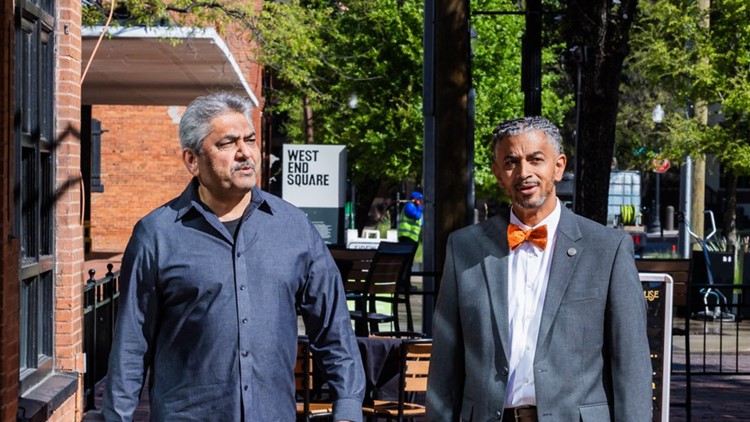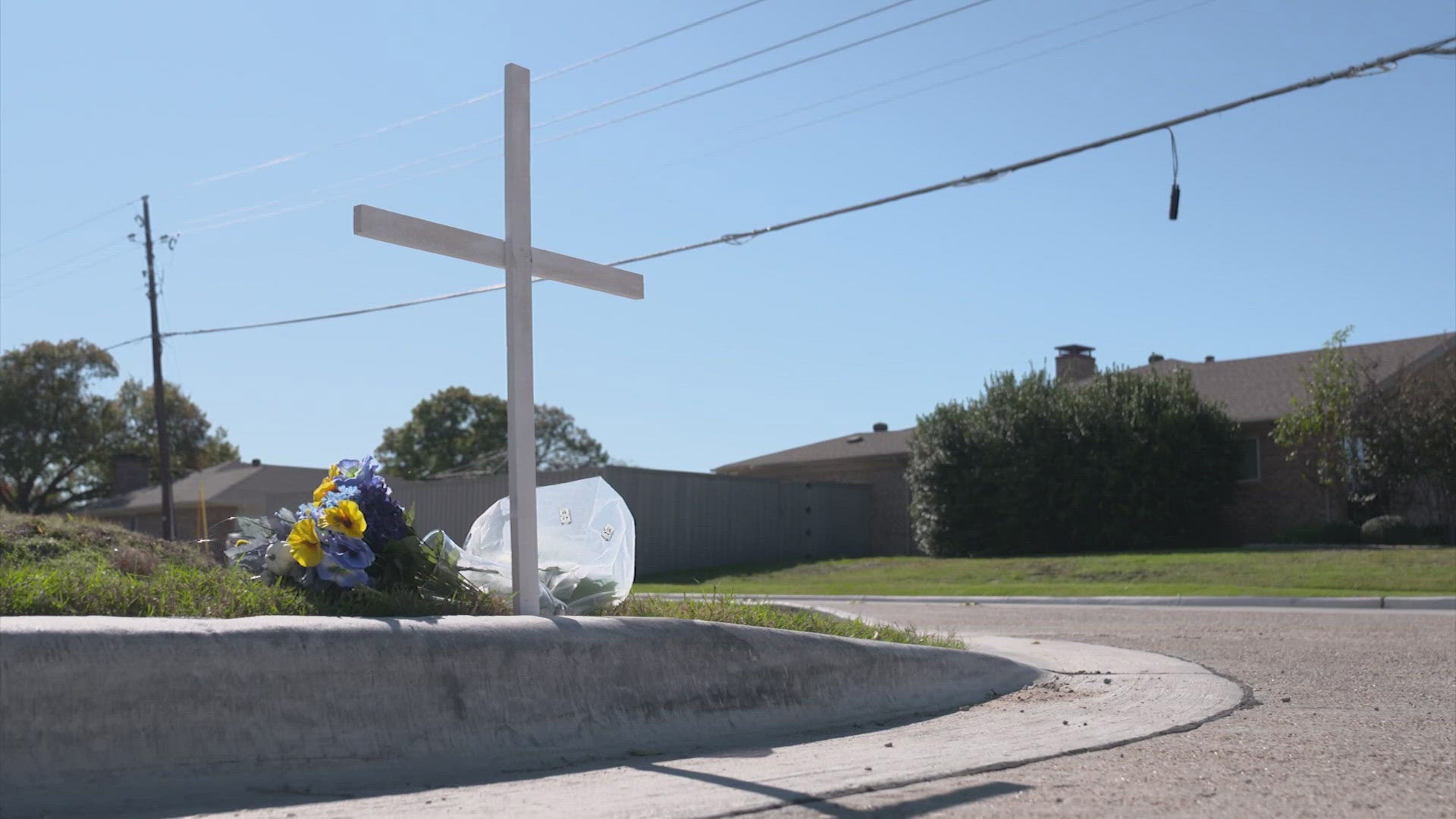DALLAS — Read this story and more North Texas business news from our partners at the Dallas Business Journal.
On a recent tour of the West End Historic District, restauranteur Jay Khan pointed out the many vacant storefronts.
"They moved," Khan said, pointing at a Market Street site that once housed Sonny Bryan's Smokehouse.
"They’re gone," he said, motioning toward the former site of Gator's Dallas.
"They shut down," he added, pointing at the former space of the restaurant Oasis.
Some businesses have stuck around, of course. They include Y.O. Ranch Steakhouse and Khan’s own RJ Mexican Cuisine. But decades of departures are now being compounded by a significant drop in tourist traffic and safety concerns.
The challenges of the West End aren't new. Landowners and business people have worried about the district's decline ever since its heyday in in the 1980s and '90s. But with several issues now coming to a head, many in the area have called for a new approach.
Khan bought into the West End more than 20 years ago with the opening of RJ Mexican Cuisine. He now owns four restaurants on the same street: 3Eleven Kitchen and Cocktails, Chet's Dallas and the newest addition, The Liam’s Steakhouse.
Khan is optimistic about the West End's potential, and he's doubling down with plans to open three more concepts this year. One will take over the old Sonny Bryan's space while another will replace the neighboring Oasis. Kahn declined to go into too much detail, including the location of the third restaurant, but by the end of 2024, he could have seven restaurants along Market Street.
Khan said he's already invested about $10 million into his current restaurants. Throw in the three still being planned and it's closer to $25 million to $30 million.
His experience so far with Liam’s, which he said cost between $800,000 and $900,000, exemplified to Khan some of the struggles of this area.
"My profit margins are not great right now," he said. "But I've been here for 30-some years already and I don't have any plans to leave this area anytime soon. That's why I'm putting so much in it."
Beyond tourism
The West End Historical District covers roughly 30 blocks, or about 67 acres, on the western edge of downtown Dallas. It's full of converted warehouses with offices, stores and restaurants, as well as hotels, apartments, museums and landmarks. It's a major tourist attraction, from reminders of the Kennedy assassination such as the the Sixth Floor Museum to family-friendly attractions including the Dallas Aquarium and Museum of Illusions to the Dallas Holocaust and Human Rights Museum.
"Those museums have kept us alive and afloat," said Phillip Honoré, president and executive director of the West End Association, a group of merchants and real estate professionals working to promote the area's economic health.
The area could benefit greatly from the nearly $3 billion redevelopment of the Kay Bailey Hutchison Convention Center.
But in the meantime, businesses that depend heavily on tourists have seen a noticeable drop in traffic. Honoré said an area that used to see about 6 million visitors a year now gets about 2 million. Folks in the West End attribute that to the Covid-19 pandemic as well as perceptions, both valid and overblown, about the area's safety.
The West End Association and Downtown Dallas Inc. are working on a marketing plan to promote the area to Dallasites who forget it’s there. The nonprofits want to host more family-friendly events to draw in crowds. Additionally, Honoré believes the West End has lost some of its appeal to locals because of a lack of retail options.
"My recommendation to the property owners … we need some retail because people like to shop, eat and relax," he said.
The two groups have also launched a $500,000 project to increase street lighting in the area, and they've also been working to increase security patrols.
"If people feel safe, they will come to the businesses," Honoré said.
West End champions see a way forward. The district has many advantages. That includes its rich history and being more walkable than most of downtown, owing to its development in the early 20th century, before cars were ubiquitous.
Bridging past and present
The West End developed as a factory and warehouse district in the 1910s because of proximity to railroads. Goods were distributed from the area to the rest of Dallas.
But as city and state leaders prioritized the highway system around the middle of the century, the prominence of the West End faded. And after President John F. Kennedy was killed in Dealey Plaza in 1963, the West End, not mention Dallas more widely, became indelibly linked with one of the bleakest chapters in America's history.
In the aftermath of the assassination, many civic leaders advocated for demolition of the buildings associated with the national tragedy, according to timeline on the West End Association's website. Mayor Erik Jonsson, influential merchant Stanley Marcus and others, however, championed protecting the history these buildings embodied.
In 1975, the city of Dallas officially designated the district as historic, preventing the development of skyscrapers and planting the seeds of a tourism destination.
In the 1980s, the district evolved into an entertainment hub, with hot spots such as the famed Starck Club, Planet Hollywood and Cinema 10.
That glitz and glamour began to fade in the 1990s, and many hands were wrung about what should be done. In the early 2000s, the historic district created a partnership with DDI to improve the cityscape by patching up roads and sidewalks and encouraging residential development.
There have been lots of grand plans for the West End. A few years ago, the Dallas Innovation Alliance pushed for the creation of an innovation district, with historic buildings and warehouses repurposed as office space and parking lots converted into parks. That's happened, to some extend — some large corporate tenants call the area home while West End Square is a handsome pocket park and public meeting space that replaced an old surface lot.
In 2015, Plano-based Granite Properties Inc. purchased a 1903 brick-and-timber building at Munger Avenue and North Record Street that decades ago housed Brown Cracker and Candy Co. and later Sunshine Biscuit Co. The real estate company spearheaded a $77 million redevelopment that turned the property into a modern office building while maintaining its historic character. Now known as Factory Six03, it's landed major tenants including the C1 Innovation Lab affiliated with Blue Cross Blue Shield of Texas, a Sam's Club technology hub and coworking provider Common Desk. The district has also seen new development, like The Luminary, a 169,000-square-foot office building that opened in 2019.
Granite Properties Senior Managing Director Paul Bennett called Factory Six03 an exemplary success that's 90% leased. But he agreed the biggest challenge to promote the area starts with increasing retail traffic.
What's next
Despite that long history, some West End boosters feel the area is overlooked by City Hall.
"One of the first things that the stakeholders said to me was that they felt like they were the stepchild of the downtown area, that they felt neglected." Honoré recalled about when he joined the association in 2020. "They felt like they didn't have the attention that other parts of downtown [receive]. ... I said that's something we can fix."
The City of Dallas did not respond to a request for comment.
DDI supports the vision of Honoré and others to revitalize the West End, said Shalissa Perry, the downtown group's chief marketing officer.
"We work with the stakeholders to really help bring their vision to fruition," she said. "We are really careful not to plan for our districts but plan with them."
Some big, empty buildings could see new life. The old Starck Club space, a building just north of Woodall Rodgers Freeway that actually dates back to the late 1800s, is up for sale and being marketed as both a renovation/expansion or redevelopment opportunity.
The old Spaghetti Warehouse building, which has been vacant since the restaurant closed in 2019 following a 47-year run, is gaining some interest from property owners.
Getting that building "back up and running" would "really help" the district, Honoré said. He said plans are being discussed and that something could happen within 12 to 18 months. He wasn't sure of its next use but didn't think it would be a restaurant.
While the West End has seen many different eras, Khan and Honoré believe its best is yet to come: a neighborhood full of family-friendly activities, booming stores and restaurants and thriving businesses, one that balances history with the constant development pressures of Dallas. They want to see a district that doesn't just merely survive, but one that flourishes and thrives.
Honoré called the West End "a gateway into the city."
"It tells its story and the story is important," he said.



